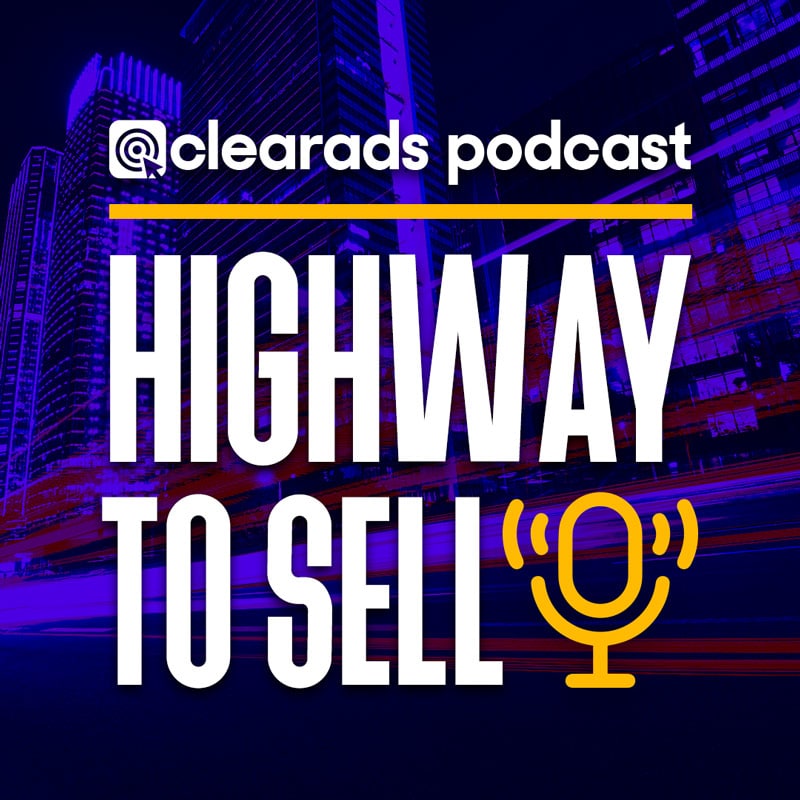Host (Tom Hor): Welcome to the Clear Ads Podcast: Highway to Sell. I’m joined today by Helen Robinson, our Head of Accounts at Clear Ads, to kick off a new series for enterprise brands. We’ll be talking about Amazon’s Demand-Side Platform (DSP)—how enterprise and high-street brands can leverage it for targeted programmatic advertising across Amazon and beyond.
Tom: So Helen, let’s start with the basics. What is Amazon DSP?
Helen: Amazon DSP uses Amazon’s first-party data to build audiences for targeting. Unlike PPC, which is intent-driven (a shopper searches for “red scarf” and you appear), DSP is more proactive—you can show ads to people who may be in-market based on their behavior, even if they haven’t searched right now. It’s also powerful for remarketing—showing ads to shoppers who viewed your product but didn’t purchase. Sponsored Display offers a “DSP Lite” version of this, but DSP is more advanced and generally delivers stronger results, especially for remarketing and premium positioning both on and off Amazon.
Tom: There have been misconceptions about DSP—especially around attribution. What’s changed?
Helen: In the past, there were concerns about double or triple attribution across PPC, organic, and DSP. But now, by linking your merchant token from Seller or Vendor Central to DSP, attribution is far clearer. It connects DSP and PPC data, showing a more accurate path to purchase. While true ROAS sometimes looks lower, it’s more realistic—and it allows smarter optimization of placements, audiences, and creative.
Tom: And unlike PPC, DSP is impression-based—you pay per thousand impressions (eCPM), not per click. That can make it harder to gauge direct impact, but frequency and exposure matter. Tools like Amazon Marketing Cloud (AMC) show how DSP ads contribute to the journey, e.g., PPC ad → 3 DSP ads → final sale. Even if DSP isn’t the last click, it often plays a key reminder role.
Helen: Exactly. Exposure builds familiarity. If your ad doesn’t appear, a competitor’s will. Blocking competitors can be just as valuable as winning a direct click.
Tom: Great point. Let’s talk guardrails and refinements.
Helen: With DSP you can:
-
Use viewability settings (e.g., ad must be 60% visible to count).
-
Run inventory reports to check placements and cut underperformers.
-
Build blacklists/whitelists to refine where ads appear.
-
Layer and test audiences—from broad category targeting to highly granular demographics, behaviors, or affinities.
Tom: And for enterprise brands, bigger budgets allow you to hit the whole funnel at once—awareness, consideration, remarketing—rather than cautiously starting at the bottom. With scale, you also get access to premium placements: Prime Video, Twitch, IMDb, Alexa, Amazon Music, even unique home-page slots.
Helen: Plus, enterprise brands usually have creative teams, making video and audio ads easier to produce. These formats are underused, so they’re less competitive and often more cost-effective.
Tom: Another strength is cross-selling and product launches. DSP can target past buyers of related items or audiences with matching lifestyles. For new products, enterprise brands can rely on brand reputation and category targeting, not just existing product views.
Helen: And don’t forget DSP is available even if you don’t sell on Amazon directly. We’ve run DSP campaigns for holidays, insurance, training courses—using link-out campaigns to direct traffic off Amazon.
Tom: Looking ahead, Amazon is working on integrating keyword-based audiences into DSP via AMC—blurring the lines between PPC and DSP. And as streaming and connected TV grow, DSP placements are becoming more affordable and accessible beyond just the biggest global brands.
Helen: My key takeaway: be open-minded. DSP had a bad reputation early on, but with better attribution and tools, it’s now a powerful weapon for enterprise advertisers.
Tom: And mine: don’t be afraid to target the full funnel from day one. Enterprise brands have the budgets and recognition to play across awareness, consideration, and remarketing simultaneously.
Tom: Thanks for joining me, Helen. And thank you all for listening. If you’re interested in exploring DSP for your brand, reach out at clearadsagency.com—our team will be happy to strategize with you. Don’t forget to like, subscribe, and share so you never miss an episode. Until next time—goodbye from me and goodbye from Helen.
Helen: Goodbye!
